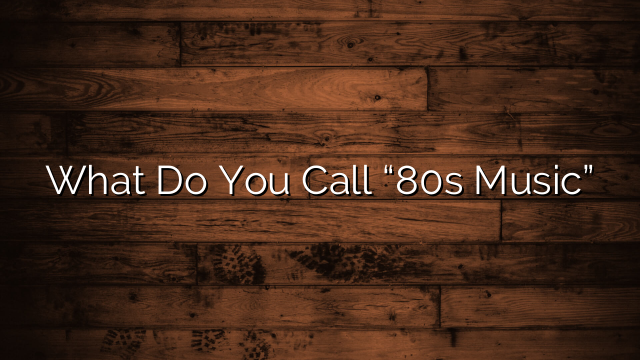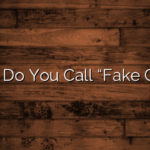The music of the ’80s, like a vibrant and electrifying time capsule, encapsulates an era defined by its unique sounds and cultural significance.
It is an undeniable truth that ’80s music holds a special place in the hearts of many, resonating with a nostalgic charm that transports listeners back to a time of big hair, shoulder pads, and neon lights.
This article aims to explore the multifaceted nature of ’80s music through an analytical lens, delving into its various genres, iconic artists and bands, as well as its profound influence on popular culture.
By examining the legacy left behind by this remarkable decade of musical innovation and creativity, we gain a deeper understanding of how ’80s music continues to captivate audiences today.
So join us on this journey through time as we uncover the essence of what makes ’80s music truly extraordinary.
Key Takeaways
- ’80s music is characterized by a diverse range of genres and styles that reflected the cultural and social changes of the time.
- Iconic artists like Madonna, Michael Jackson, and Prince not only created memorable music but also established themselves as fashion icons, popularizing trends like neon colors and big hair.
- MTV played a crucial role in amplifying the popularity of certain artists and shaping the overall aesthetic and sound of the ’80s.
- The music of the ’80s continues to captivate audiences today due to its ability to evoke nostalgia and inspire artistic expression and cultural revival.
The Soundtrack of the ’80s
The soundtrack of the ’80s was characterized by a diverse range of musical genres and styles that reflected the cultural and social changes of the time.
One notable aspect of ’80s music was its exploration of fashion trends. Artists such as Madonna, Michael Jackson, and Prince not only created iconic music but also established themselves as fashion icons, popularizing trends like neon colors, big hair, and shoulder pads.
Another influential factor in shaping the sound of the ’80s was the emergence of MTV. This new medium allowed for visual storytelling alongside music, creating a platform for artists to express themselves creatively through music videos.
The impact of MTV on ’80s music cannot be overstated; it played a crucial role in amplifying certain artists’ popularity and contributed to defining the overall aesthetic and sound of this era.
Exploring the Genres of ’80s Music
This discussion will explore the various genres of ’80s music, including pop hits and chart-toppers, rock anthems and power ballads, as well as new wave and synth-pop sensations.
The ’80s saw a rise in catchy pop songs that topped the charts, showcasing memorable melodies and hooks.
Rock music also thrived during this decade with anthems that became iconic symbols of the era’s rebellious spirit.
Additionally, new wave and synth-pop emerged as influential genres, characterized by their innovative use of synthesizers and electronic elements to create a distinct sound.
Pop Hits and Chart-Toppers
Pop hits and chart-toppers of the ’80s can be described as an era characterized by their catchy melodies, infectious rhythms, and widespread popularity. These songs not only dominated the charts but also had a profound impact on fashion and style during that time period.
With the rise of MTV, music videos became an essential part of promoting these pop hits, allowing artists to showcase their unique styles and personalities. The visual element added an extra layer of excitement and entertainment for audiences worldwide. Moreover, MTV played a crucial role in popularizing ’80s music by providing a platform for emerging artists and creating a sense of community among fans.
Overall, the pop hits and chart-toppers of the ’80s left an indelible mark on both musical history and popular culture.
- Catchy melodies that get stuck in your head
- Infectious rhythms that make you want to dance
- Widespread popularity across different age groups
Rock Anthems and Power Ballads
Rock anthems and power ballads of the ’80s captivated audiences with their soaring melodies, emotive lyrics, and powerful performances that left a lasting impression on the era’s musical landscape.
These songs were characterized by their epic soundscapes, showcasing intricate guitar solos, melodic hooks, and emotionally charged vocals.
Rock ballads emerged as a prominent subgenre during this period, often featuring heartfelt lyrics exploring themes of love, heartbreak, and longing.
Bands like Journey, Bon Jovi, and Guns N’ Roses became synonymous with the genre’s success through iconic hits such as ‘Don’t Stop Believin’,’ ‘Livin’ on a Prayer,’ and ‘November Rain.’
Additionally, the rise of hair metal bands brought a new level of theatricality to rock anthems with flamboyant stage presence and elaborate costumes.
Overall, these rock anthems and power ballads defined the ’80s music scene by delivering memorable performances that continue to resonate with audiences today.
New Wave and Synth-Pop Sensations
The emergence of new wave and synth-pop in the ’80s brought a fresh, electronic sound to the music scene, characterized by catchy synthesizer melodies, pulsating rhythms, and innovative production techniques.
This genre combined elements of punk rock with electronic music influences, resulting in a unique and vibrant sound that captivated listeners.
The new wave revival movement in the ’80s saw bands like Duran Duran, Depeche Mode, and New Order gain immense popularity with their infectious pop hooks and danceable beats. These artists utilized synthesizers as the driving force behind their music, creating a futuristic and energetic atmosphere.
The influence of electronic instruments in this era was undeniable; they became essential tools for musicians seeking to explore new sonic possibilities.
This period marked a significant shift in popular music, paving the way for future innovations within the electronic music genre.
Iconic Artists and Bands of the ’80s
Synonymous with extravagant hairstyles and neon fashion, the music of the 1980s boasts a roster of artists whose sonic creations defined an era. The ’80s witnessed the rise of hip hop and the evolution of punk rock, two genres that greatly influenced the musical landscape during this time.
Hip hop emerged as a cultural movement in New York City, characterized by its rhythmic beats and socially conscious lyrics, challenging societal norms and giving voice to marginalized communities. Meanwhile, punk rock continued to evolve in the ’80s, branching into various subgenres such as hardcore punk and post-punk.
Iconic artists and bands like Run-D.M.C., Beastie Boys, The Clash, and Siouxsie and the Banshees contributed to shaping these genres through their innovative soundscapes and rebellious attitudes. Their impact on ’80s music remains indelible, serving as a testament to their enduring influence on subsequent generations of musicians.
The Influence of ’80s Music on Popular Culture
Characterized by its vibrant and innovative soundscapes, the music of the 1980s left an indelible mark on popular culture, influencing fashion trends, art movements, and even film soundtracks.
The influence of ’80s music on fashion cannot be overstated. It introduced bold and flamboyant styles such as neon colors, oversized shoulder pads, and vibrant prints that became iconic representations of the era.
Additionally, ’80s music had a significant impact on film and television. Many movies and TV shows during that time incorporated popular ’80s songs into their soundtracks, creating a symbiotic relationship between the music industry and the entertainment world. This helped to further popularize both the songs themselves and the artists behind them.
The catchy melodies and energetic beats of ’80s music continue to resonate with audiences today, reminding us of a culturally defining era in history.
Nostalgia and Revival: The Legacy of ’80s Music
Nostalgia for the vibrant and innovative soundscapes of ’80s music lingers, as its legacy continues to inspire a revival in fashion trends, art movements, and film soundtracks.
The nostalgia associated with this era has led to a resurgence in fashion trends that draw inspiration from iconic ’80s styles such as bold colors, shoulder pads, and neon accents.
Moreover, the impact of MTV during the ’80s cannot be underestimated. This groundbreaking music television network brought music videos into mainstream culture and played a significant role in shaping popular culture during that time. The influence of MTV can still be seen today through the continued importance placed on visual aesthetics within the music industry.
Overall, the enduring appeal of ’80s music lies in its ability to evoke a sense of nostalgia while also serving as a catalyst for artistic expression and cultural revival.
Frequently Asked Questions
What were the popular fashion trends in the ’80s music scene?
In the ’80s music scene, popular fashion trends included neon colors and shoulder pads. These trends were characterized by their vibrant and bold nature, reflecting the energetic and flamboyant atmosphere of the era.
How did advancements in technology impact the production of ’80s music?
Advancements in technology in the ’80s music production had a significant impact on music styles through the evolution of synthesizers. The incorporation of new electronic instruments led to the development of unique sounds and genres in this era.
Were there any controversial or influential music videos released in the ’80s?
In the 1980s, several influential and controversial music videos were released. These videos pushed boundaries in terms of artistic expression and content. They had a significant impact on popular culture and played a role in shaping the music industry during that era.
What were some notable collaborations between artists in the ’80s music industry?
Notable collaborations in ’80s music included the duet "Under Pressure" by Queen and David Bowie. Iconic fashion trends in the ’80s music scene encompassed bold colors, shoulder pads, and leg warmers.
How did the political and social climate of the ’80s influence the themes and lyrics of the music?
The political and social climate of the ’80s greatly influenced the themes and lyrics of the music. Artists addressed issues such as Cold War tensions, nuclear disarmament, socioeconomic inequality, and the AIDS crisis. The impact of technology on music production also contributed to the unique sound of ’80s music.
Conclusion
The ’80s music scene was a diverse and influential era in popular culture. It encompassed various genres, including rock, pop, new wave, and hip-hop. Iconic artists and bands like Michael Jackson, Madonna, Prince, and U2 defined the sound of the decade.
The impact of ’80s music can still be felt today through its influence on fashion trends and contemporary artists. Nostalgia for this era has led to a revival of ’80s-inspired music in recent years.
Overall, the legacy of ’80s music is one that continues to captivate audiences with its unique blend of creativity and innovation.



